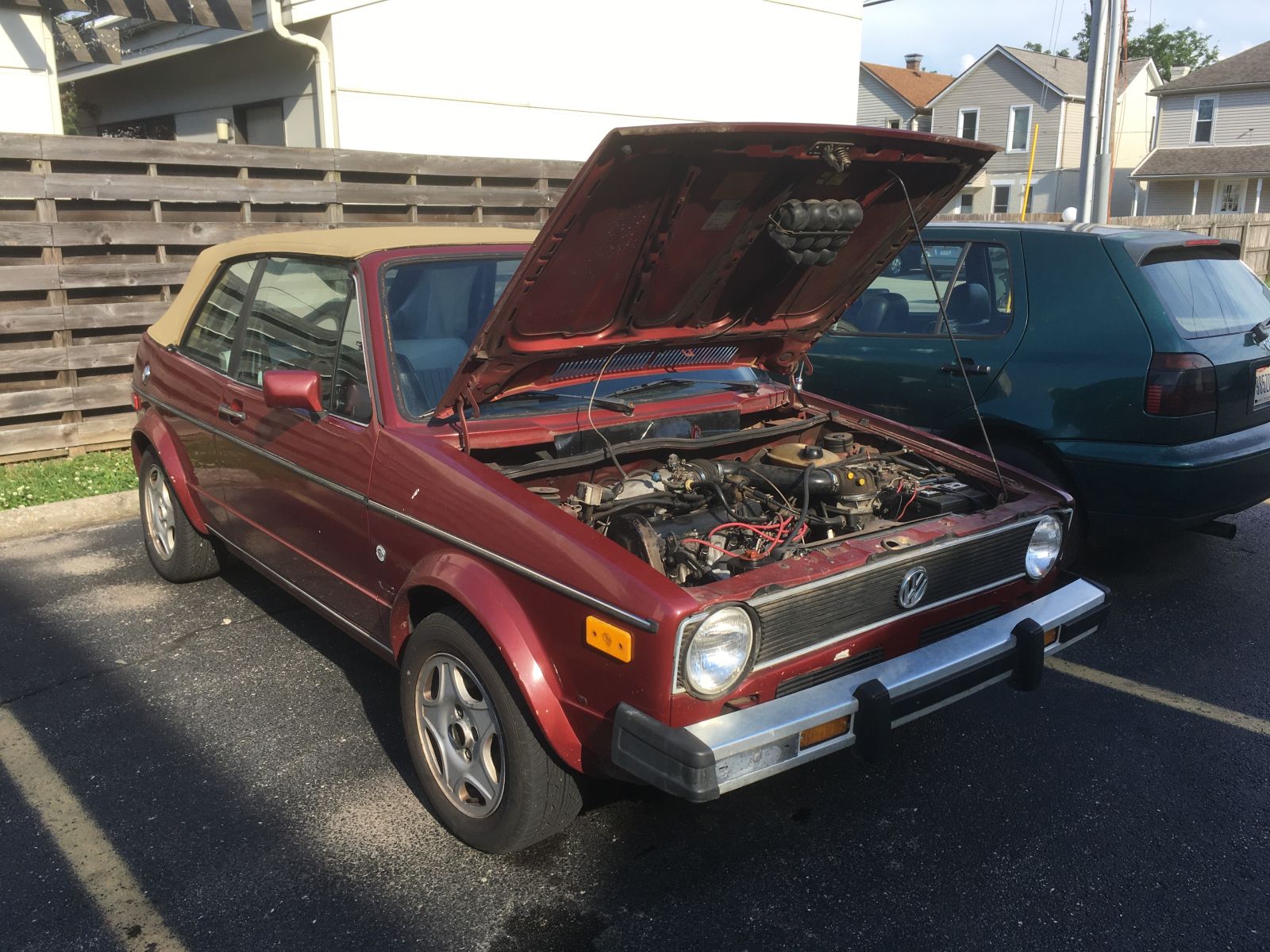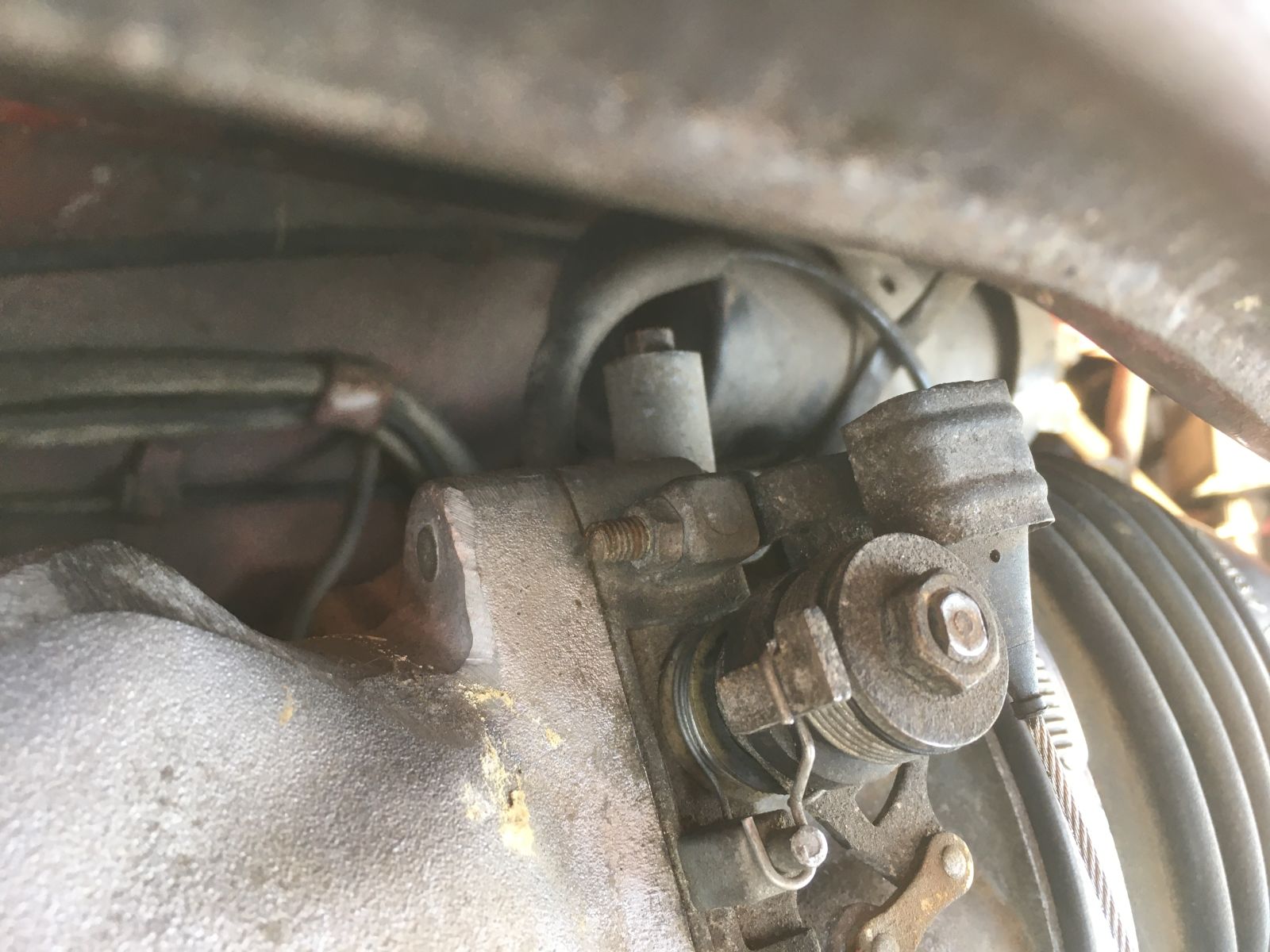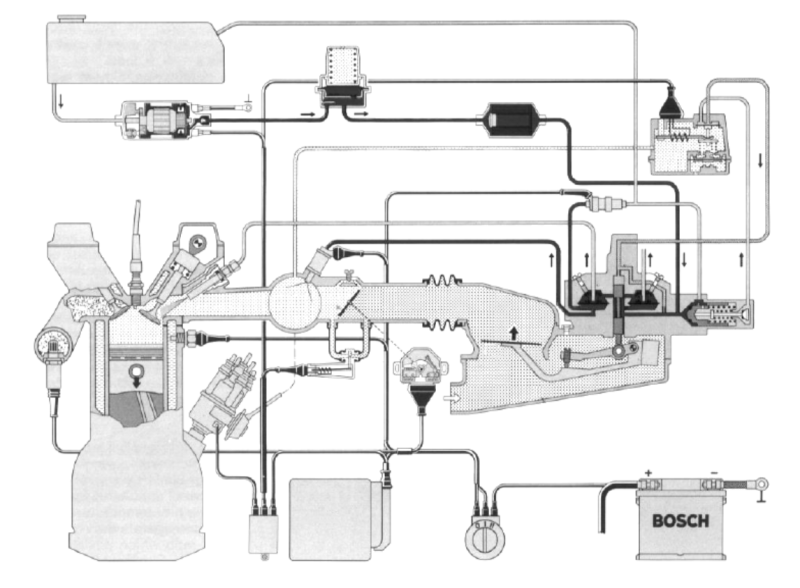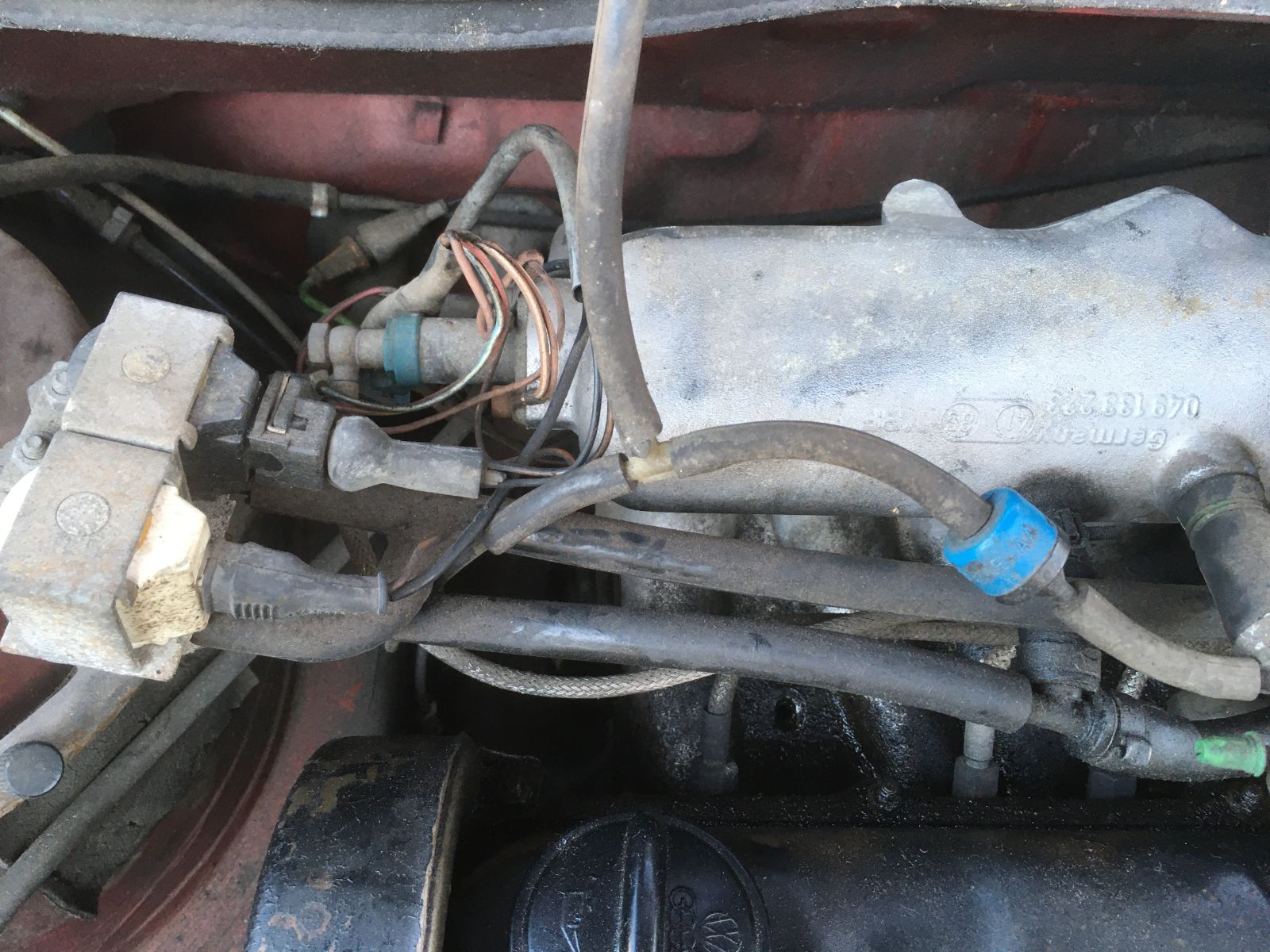
Ever since I bought my 1986 Cabriolet, it’s run kind of terrible. I’m talking “idles at 1600 and has a massive exhaust leak, also don’t try to drive it before it gets warm or else it’ll stall” terrible. That’s kind of not cool. Since I bought the car, all I’ve done was:
- Change the oil with the wrong grade of oil, whatever
- Put a fresh intake air filter in
- Replace the cracked radiator
- Change the brakes, find that one caliper was seized
- Replace the badly worn out rain tray cover
I still need to replace that brake caliper. It’s fine as long as you give yourself adequate stopping distance, but sheesh, that explains the core support damage. (Nothing important is bent, just the bottom section of the support is pushed in, which might be why the radiator was broken when I bought it)
So, let’s commence. The car is from 1986. This means it has Bosch CIS with closed-loop lambda control. The oxygen sensor sends feedback to something on the fuel distributor called the “frequency valve”, colloquially known as the “buzz box” since it buzzes when properly operating. To adjust fuel mixture, one must insert a 3mm hex wrench into the adjustment hole in the fuel distributor, turning a small screw. You check the set point with a dwell meter (or some other way of measuring duty cycle). When set appropriately, the dwell meter will read 45° of dwell, or 50% duty cycle. However, I do not own a dwell meter and none of my friends have one, so I’ll do this the “right” way eventually. There’s also a small screw on the back side of the throttle body, located in such a place that you must burn you hand when adjusting the idle air bypass. Thanks, guys.

The screw was almost all the way out when I first adjusted it. This explains the 1600 ish RPM idle. But why was it set this way? With the engine hot and running (this is important), I turned the idle air bypass screw until idle was about 800-900. That seems right I guess, the tach wiggles a bit anyways. Whatever, it wasn’t choppy or high. So I turn it off and let the motor cool for a bit while I put the tools away. Job done, right? That was easy.
The next start attempt saw the motor fire a few times then turn off. Crap.
My assumption: One of the POs of the car (the guy I bought it from only had it briefly, said he inherited it. Seems legit) found the car to be running rough, so they removed the factory anti-tamper seal one must remove to adjust the mixture, adjusted the mixture, realized they screwed up, and cranked the shit out of the idle screw to compensate. It’s run well enough for me to drive it ~2000 miles, so whatever.
Not having a dwell meter, I just sort of guessed, made some adjustment, let it cool for a few minutes, made another adjustment, etc etc etc. Now it idles at ~850 and revs up and down without sputtering. When cold, I have to hold my foot on the gas for a bit to get it to not stall out. That’s fine for the time being.

CIS Lambda, formally known as K-Jetronic on this car, features the fuel distributor with air flow metering plate, a cold start valve which sprays fuel into the manifold when cold (instead of, you know, having a choke), a warm-up regulator, which measures the temperature to control fuel enrichment, and a few other components. Watch this video if you want to have your mind numbed by the absurdity of CIS and the genius of the engineers who designed it. It’s pretty cool.

Pictured above on the end of the intake is the cold start valve. I didn’t take many other photos as my engine bay is pretty gross. I think what’s happening is when the engine is cold, the fuel mixture is enriched enough that the car will stall if the throttle isn’t open. This is not the only issue with the car. It runs and drives pretty fine as is, but vacuum leaks, the enemy of CIS, are non-zero. I found none on the intake air side, but manifold vacuum had a number of badly dry rotted hoses.

I replaced a bunch, all related to the vacuum advance for the distributor. So far this actually has a somewhat large effect on drivability. I also removed the windshield wash bottle, since this is a race car.
So, to do:
- Hunt down a dwell meter or similar and get this running better
- Replace V belts
- Clean up the engine bay more
- Fix the core support
- Fix the brakes! This one obviously is more important.
Then I can move on to the fun stuff.